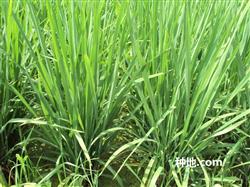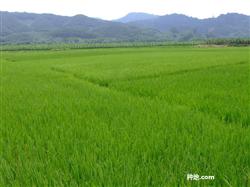How to control diseases and insect pests in rice?

How to control diseases and insect pests in rice? When does it start? Rice planthopper, rice leaf roller and panicle neck blast occurred greatly, while rice stem borer, sheath blight and rice false smut occurred moderately in the second generation. Prevention and control work should adhere to the strategy of "pressing the front and controlling the rear, treating the small early is the comprehensive control of early prevention". Focus on four key battles: the first: in the first and middle of July, the main targets of prevention and control were the second generation rice planthopper and the second generation rice leaf roller. When the number of rice planthoppers reached 100, the fields with more than 1200 insects were immediately treated with quick-acting pesticides such as chlorpyrifos and isoprocarb, and the recommended insecticides were used 7 days after the emergence of adult moths in the field (or more than 60 moths per mu). The second time: from late July to early August, the main control objects were the third generation of rice planthopper, the third generation of rice leaf roller, the second generation of Chilo suppressalis, and the treatment of sheath blight. Before July 25, fipronil and thiazinones were widely applied in all the paddy fields in the county, and the fields of the second generation Chilo suppressalis, rice planthopper and rice leaf roller exceeded the standard after application, and quick-acting pesticides were used for emergency control. Combined with pest control, the fields with severe sheath blight should be treated with Jinggangmycin. The third time: the rice break period (early and middle August), the main object of prevention and control is panicle neck blast and rice false smut, pay attention to the emergency control of rice planthopper and rice leaf roller. Tricyclazole + Jinggangmycin + triadimefon or rice amide or love seedling EC were applied once at the breaking stage of rice (the simple judgment method was that there was one ear outcrop per seedling) to prevent neck blast and false smut. If Rain Water is more, apply Fuji No. 1 or Fuji No. 5 + triadimefon again at full heading and flowering stage. The occurrence of panicle neck blast is very serious in our county all the year round, and the harm is great. Medication prevention in the break stage is the key measure to control panicle neck blast, which must be paid great attention to. The fields of rice planthopper and rice leaf roller exceeding the standard should be urgently controlled by quick-acting chemicals. The fourth time: from late August to early September, the main control object was the fourth generation of rice planthopper, and emergency control was carried out in the fields with high amount of rice leaf borer. Fields with more than 5000 rice planthoppers should be drained, sprinkled with 80% dichlorvos 400ml mixed with fine soil and sprinkled with 30kg of fine soil. A day later, water will be returned, and spray control will be carried out as appropriate. The sale and use of five highly toxic organophosphorus pesticides, including methamidophos, parathion, methyl parathion, monocrotophos and ammonium phosphate, are completely prohibited; the use of imidacloprid and its compound preparations and pyrethroquinone pesticides and their combinations are prohibited in rice fields; acetamiprid and its compound preparations are not recommended, and triazophos and its compound preparations are not recommended. The following medicament control is recommended. Control of rice planthopper: long-term efficacy agents: buprofezin (Chuanshanling, Propofol, Youlode, Saiwang), valid for 25-45 days; thiazine (Aktai), valid for 25-30 days, Pyrazidone (Feidian), valid for 40-45 days. The efficacy of the above long-acting agents is slow, and it has high killing effect on young nymphs and eggs, so it should be applied in rice planthopper egg incubation stage and low age nymph stage. Quick-acting pesticides: chlorpyrifos (Tongshun, Lesbon, Xinnongbao), isoprocarb (leaf cicada powder), dichlorvos, mainly used in serious rice planthopper fields, are the main pesticides for emergency control. Concurrent control agents: fipronil (fipronil) is mainly used to control the second generation of Chilo suppressalis on rice. It has a good effect on rice planthopper and has a long period of validity. Control of rice leaf roller: Probophos (chlorophos, Kulong), chlorpyrifos (Tongshun, Lesbon, Xinnongbao), avermectin (blue sharp), fluoronitrile-chlorpyrifos (Qiji) and chlorobenzamide (Kangkuan), etc., should be used from the peak of egg hatching to the second instar larvae to control advanced instar larvae, and the above pesticides can be mixed to enhance the insecticidal effect. Tricyclazole, Fuji No. 1 and Fuji No. 5 are recommended for the control of rice blast (including panicle neck blast), and Jinggangmycin + triadimefon, rice amide and Aimiao EC are recommended for rice false smut control. Rice amide and Aimiao EC have good control effect on neck blast at the same time. Click to get massive rice planting technology click to get massive grain planting technology
- Prev

When should we pay attention to the control of rice diseases and insect pests
When should we pay attention to the control of rice diseases and insect pests? In the period from rice sowing to seedling field, farmers should focus on the control of seed-borne diseases (evil seedling disease, seedling rice blast, dry tip nematode, etc.), gray planthopper, first generation borer and so on. In the rice break stage, it is necessary to focus on the control of rice planthopper, rice leaf borer, stem borer, panicle blast,.
- Next

How to control diseases and insect pests of rice in summer?
How to control diseases and insect pests of rice in summer? According to the trend analysis, rice diseases and pests focus on "three diseases" (rice leaf roller, rice planthopper, Chilo suppressalis, rice blast, rice false smut and sheath blight) in summer and autumn. At the beginning of September, the sixth (4) generation rice planthopper, the sixth (4) generation rice leaf roller, the third generation.
Related
- The first cup of black tea in spring, the flavor and history of tea gardens in Kenya, Africa
- The computer can not only choose potatoes, but also grow tea rice. AI will grow winter oolong tea champion.
- It is not only the inflated tea bitten by insects, but also engraved with the four seasons tea in Beipu.
- The Oriental Beauty Tea Festival in Zhuxian County takes the stage at the weekend to experience the plus-size feast of oil tea.
- & quot; Oriental Beauty Tea & Exploration of Emei in Hsinchu, the hometown of quot;
- The new variety of strawberry "Tainong 1" dessert is the first choice with mellow aroma. Crimson gorgeous
- History of Tea in Taiwan: from Wild Inner Mountain to Export Tea Garden
- Two types of Taiwan Oriental Beauty Black Tea won the British three-Star Award for Childhood Tea Xiang Zhang Jiaqi changed from pilot to champion tea maker.
- Banana species and varieties: the planting history of Taiwan Xianren banana and dwarf banana is long, is banana disease resistant?
- Coffee planting Technology: Qianjie Coffee from Seedling to harvesting

